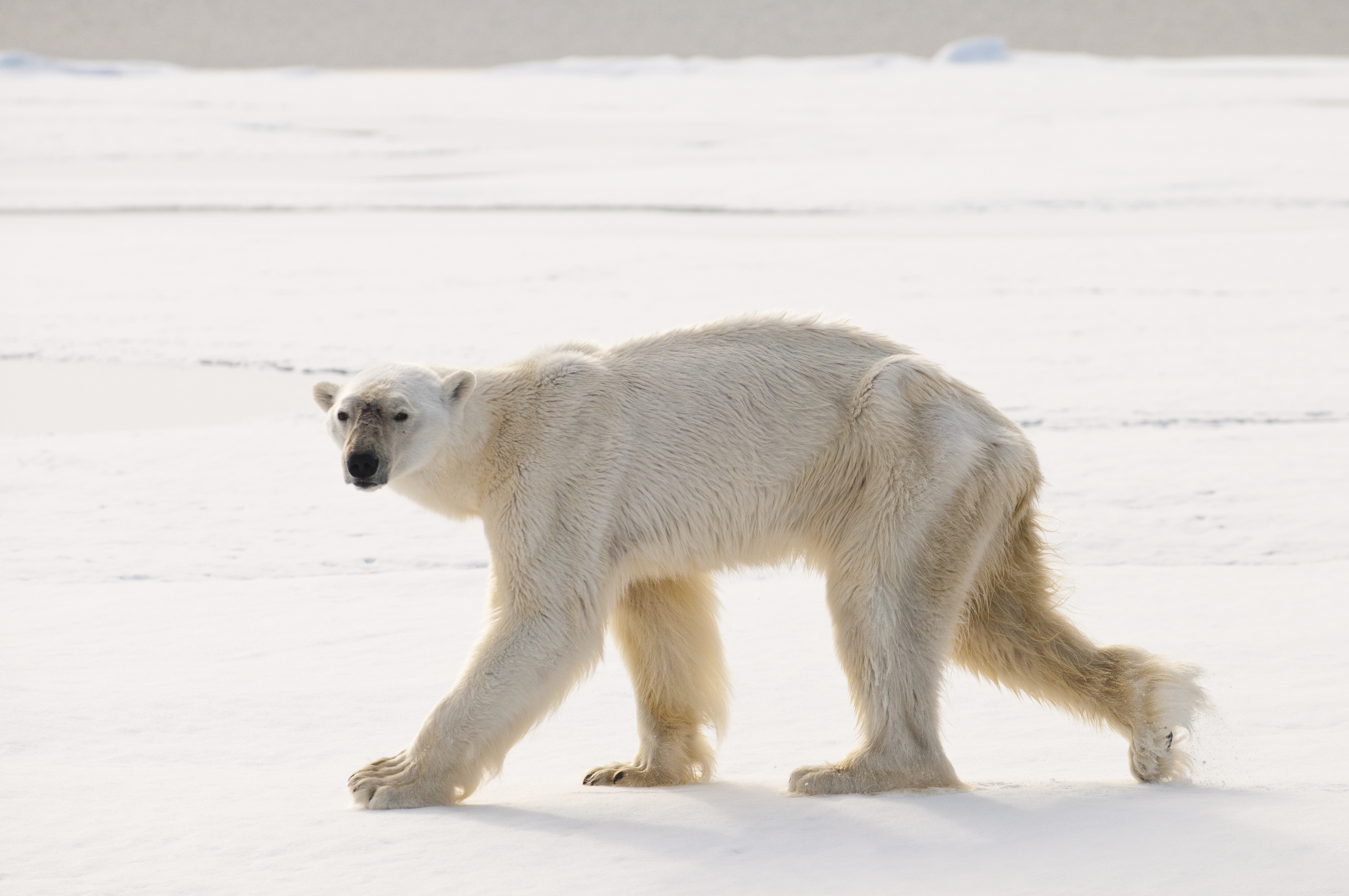
Polar bears are going to new lengths just to make ends meet, by swimming longer, walking further and now, diving longer.
Polar bears are facing unprecedented habitat loss due to climate change, but a recent study in Polar Biology concludes this hasn’t dampened the bear’s efforts to endure, detailing the longest-ever polar bear dive. Coming in at 3 minutes 10 seconds, the epic plunge, witnessed off the Norwegian coast by veteran polar expedition leader Rinie van Meurs, shattered the previous 1974 record of 72-seconds.
When van Meurs noted the dive last summer, undertaken by a scrawny adult male hunting three seals near the Norwegian arctic archipelago of Svalbard, he thought it seemed long, but didn’t know the normal length of a polar bear submerge. So he sent footage of the event to a man he’d long admired, Ian Stirling from the University of Alberta, a polar-researcher van Meurs calls the ‘Arctic idol’ for his groundbreaking work.
‘When he told me the previous record, I couldn’t believe my luck,’ said van Meurs. ‘We can only observe the bears during summer, they’re hard to spot amongst lessening ice packs, and it’s near impossible to catch a dive start to finish. I was truly in the right place at the right time.’
While it’s hard to say, the inference that polar bears are diving longer than before could mean they’re adapting to the new ice-reduced landscape, as seals, who are suffering from ice loss too, are resting and pupping increasingly further apart. Lost ice patches have also taken away bear’s hiding grounds, which may be why they’re taking up the type of aquatic-stalking methods van Meur’s observed. Previously, the King of the Arctic wasn’t thought to be a good diver—usually managing the human underwater average—but that seems only fair as, evolutionarily speaking, the bears are relative newcomers to the landscape.

Polar bears only branched off the genetic tree from the common brown bear around half a million years ago, maybe less, but in that short time they’ve gained some pretty nifty skills. The bear’s hearts have learned to cope with the fat-intense diet of seal and whale carcasses necessary to persist in the extreme cold. They’ve also traded forests for ice-floes and open water, and become expert swimmers.
But van Meurs says ultimately there’s very little the animals can do to match the pace of climate change. The emaciated bear van Meurs watched missed his seal-target, something the study cites as unfortunately common. Other brave polar bear endeavours have been met with similarly tragic results. A tracked female recently spent nine days at sea without rest, swimming almost 700km then walking another 1,800km over two months—losing 22 percent of her body weight, and her cub.
‘The bears are picking new prey like dolphins and walruses, and learning new hunting techniques, but there’s a limit to how quickly these changes can occur, even for these amazing animals,’ says van Meurs, ‘and if their prey can’t adapt, all the bear’s hard work could be futile.’
At the present rate, polar bears are anticipated to vanish by 2100, so van Meurs says it’s crucial to chronicle these animals holding out against the odds before it’s too late.
‘Rapidly the environment is taking away polar bear’s ability to make a living,’ says van Meurs. ‘Our work shows the amazing capabilities and endurance of these bears, but eventually they’ll reach their natural adaption limit and likely lose the long term battle, which just doesn’t seem fair.’
